'Car: The Evolution of the Automobile' by Rod Green
Too many compilation books disappoint because they are cranked out on short deadlines with dull, inaccurate writing and poor illustrations. They are made to a price and sold by discounters as inexpensive gifts. I am pleased to report that Rod Green's well-written book is an exception.

The 160-page compilation covers the development of the automobile, mainly from a Western European and American viewpoint. Starting with the horseless carriages of the 19th Century, the book proceeds chronologically to today's cutting edge technology. Racing cars, experimental cars, coachbuilt machines, wartime vehicles - you'll find everything here with some interesting photos and illustrations. My one complaint: the text is small and difficult to read.
Verdict: Recommended. (posted 12/16/15, permalink)
'Adios, America' by Ann Coulter
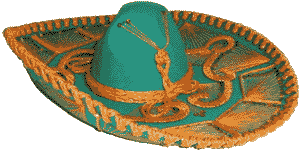 In this fact-filled book, Coulter attacks the immigration mess head-on, pointing out numerous and shocking cases of system abuses and suggesting that the only way to solve the immigration problem is to temporarily halt all immigration while we build a solid fence with our southern border.
In this fact-filled book, Coulter attacks the immigration mess head-on, pointing out numerous and shocking cases of system abuses and suggesting that the only way to solve the immigration problem is to temporarily halt all immigration while we build a solid fence with our southern border.
She also names names, pointing out the politicians who cannot be trusted, especially presidential candidate Marco Rubio.
Recommendation: Buy this book, read it, wake up and get your congressional representatives to stop this scam which is hurting our nation. 57.4% of Mexican immigrants are on some kind of welfare. Percentages are alarmingly high for all Hispanics from Central American countries. Welfare among English and German immigrants are 6.2% and 10.3% respectively.
We need to seal our borders now and only let in those who meet our needs and offer the promise of success. Our country has enough dole-sucking losers already, thank you. (posted 12/10/15, permalink)
'The Billion Dollar Spy: A True Story of Cold War Espionage and Betrayal' by David E. Hoffman
Set in the period from the late 1970s through the '80s, this should have been an exciting book. During that period, lots of technological and political changes were happening and the Cold War was still being fiercely waged between the U.S. and USSR. Unfortunately, this book failed to generate any excitement. It was epically boring.
Verdict - Skip it. (posted 12/2/15, permalink)
'Exceptional: Why the World Needs a Powerful America' by Dick and Liz Cheney
This book is divided into three parts:
• In Part I, the authors give us a concise but accurate history of America's foreign policy (with an emphasis on World War II to the present) and its unique role in world affairs.
• Part II is a takedown of the Obama Administration and how its policies have substantially weakened America and made the world less safe. They make a compelling case for their point of view, using ISIS, Russia, Iran, China and North Korea as examples.
• In Part III, the Cheneys provide a pathway to the rebirth of American power and strength - outlining a laundry list of actions which must be taken. Some of these items will be expensive and, therefore, difficult to implement but they are listed for all to see.
I consider this book to be honestly-written and thoughtful. Undoubtedly, leftists will trash this book. Pay no attention to them. 'Exceptional' is worthy of your time.
Verdict: Highly recommended. (posted 11/24/15, permalink)
'A Time For Truth: Reigniting the Promise of America' by Ted Cruz
This 400 page, easy-to-read, part-memoir, part-biography is an honest and sometimes humorous work.
Cruz revealed much about the political collusion and corrupted legislative process that exists in D.C. these days. He also detailed his experiences growing up as the son of a Cuban immigrant. And how he worked his way up to earn a clerkship under Chief Justice William Rehnquist.
As a U.S. Senator, Ted Cruz has been fighting to limit government and help citizens to retain their liberty.
I learned much about Ted by reading this book and can state with confidence that President Cruz wouldn't be such a bad idea.
Verdict: Highly recommended. (posted 11/18/15, permalink)
'By The People: Rebuilding Liberty Without Permission' by Charles Murray
Charles Murray is an excellent political scientist. I've enjoyed his books, including 'The Bell Curve' (1994) and 'Coming Apart: The State of White America, 1960-2010'.
In his latest book, Murray shows us why we can no longer hope to roll back the power of the federal government through the normal political process. Murray posits that the Constitution is broken in ways that cannot be fixed even by a sympathetic Supreme Court. Our legal system is increasingly lawless.
He proposes becoming a revolutionary radical. I found his justification difficult to swallow and the concept difficult to believe.
Verdict: Skip this one. (posted 11/12/15, permalink)
'Pope Francis and the New Vatican' by Robert Draper (Author), David Yoder (Photographer)
National Geographic has produced a 256-page coffee table book about the new pope and the Vatican. The photos are stunning and the text is surprisingly good - a combination not often encountered in coffee table books. I learned that the Pope hand writes all of his e-mail replies. While he has over five million followers, his Tweets are written entirely by his staff.
It is difficult not to like this Pope. He smiles easily and engages his followers. For me, one of his biggest problems is a misunderstanding of capitalism and a tendency to call it intrinsically evil, probably because of the perverted and corrupt 'capitalism' he experienced in his former home, Argentina. Francis has called for countries to impose more control over their economies to prevent "absolute autonomy" and foster the "common good."
Ironically, such a policies have already been tried in his beloved Argentina. "It has driven millions of Argentines into poverty by destroying the value of their savings, both through raw expropriation as happened in 2008 with private pensions (the money was taken under the aegis of helping "the poor"), and by repeated currency devaluations - the product of a government printing money to pay for its expansion of power after there was nothing left to steal."
The fact remains that free-market capitalism has pulled more people out of poverty than any church has ever done. It promotes freedom and opportunity. Take it away and you turn into 1950s China. Or present-day Cuba. Both of which, I would remind the Pope, became godless, poverty-stricken nations. Francis' new 'friendship' with Cuba's Castro brothers is an example of his naiveté when it comes to matters of the world. He's undoubtedly a man with a good heart but he's being 'played' by the world's socialists.

The book contains a dramatic photo which contrasts the richness of Vatican City with the area's homeless problem. But it is unfair to blame the gilded candlesticks, embroidered velvet and polished marble for the poverty on exhibit. It's not the finery of Vatican City which causes homelessness. Rather, it is a combination of government social policies, public debt which exceeds Italy's GDP by 135%, the global economic crisis, double-digit unemployment and over 500,000 illegal immigrants, most of whom refuse to assimilate into the Italian culture (this doesn't include the latest wave of refugees who are overrunning Europe). These problems do not lend themselves to simple, linear, side effect-free solutions; poverty is a complicated issue and most 'cures' are politically unpopular.
This big book is easy to read, has beautiful pictures and informative sections on the Pope's background. Despite its political shortcomings, it is definitely worth the read. Recommended. (posted 11/4/15, permalink)
'Being Nixon: A Man Divided' by Even Thomas
Thomas is the latest author to try and figure out What Made Nixon Tick. After 500-plus pages, he doesn't figure it out. No one knows. Nixon was half-brilliant, half-nuts and had self-esteem problems great enough to keep an army of psychiatrists busy for years.
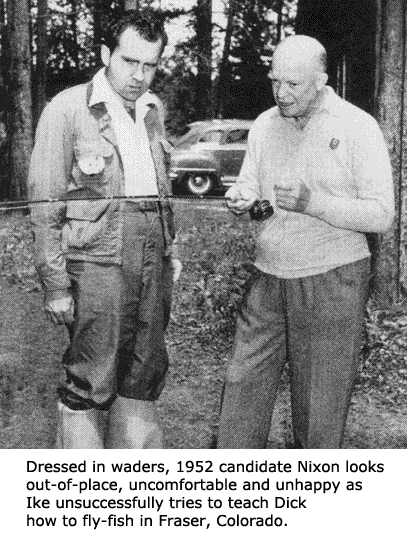
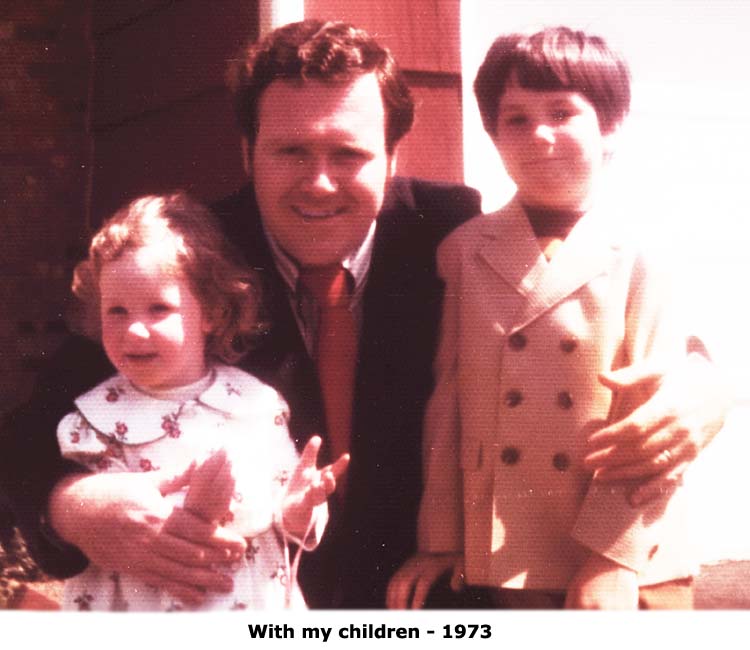
Prior to reading the book, I had to watch several of the contributors discuss their work at the American Enterprise Institute C-Span2 picked it up and you can probably find the full video posted in their archives. I recommend that you do so because the authors talk about much more than what was written in the book and there is lots of engaging and witty banter throughout the presentation.
The book itself is pretty good, too - which makes for a nice two-fer.
It's an uneven work - some authors are better than others. James Lileks was his usual entertaining self, P.J. O'Rourke was a delight - although more so at AEI, Larry Milller, a very underrated comic, wrote a poignant piece about bringing God into a child's life. Jonah Goldberg was good, too and Tucker Carlson was surprisingly funny. Joe Queenan was his usual morose self and detracted from the book.
A few authors seemed to phone it in and were boring. You'll quickly discover who they are as you read the book and can fast forward through those chapters.
Overall verdict: Recommended. (posted 10/21/15, permalink)
'Rise Of The Robots: Technology and the Threat of a Jobless Future' by Martin Ford
Author and Silicon Valley expert Ford has seen the future and there's doom and gloom everywhere. He believes that robots - mostly computers and software, rather than giant metal walking things - will eventually take over all human jobs leaving us with nothing to do and no means of earning income. It's disruptive technology taken to the Nth power.
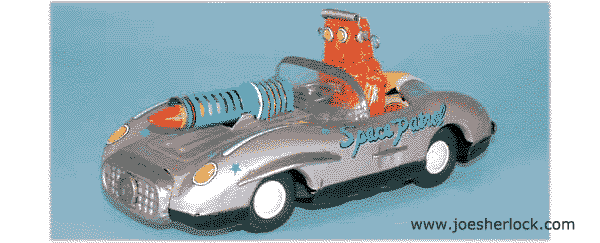
Ford says that this time it will be nothing like the transition from agriculture to industrialization - no farmers hopping on a train from Kansas to go make Model Ts in Detroit. This time there will be no place to go. So what does one do? How does a nation respond? Ford gamely suggests that everyone should get a guaranteed income from the government so that they can buy the stuff the robots are making. Sounds like a bad Sci-Fi novel to me. The book is further sullied by the author's musings on climate change, income inequality, living wages, welfare and education - all discussed from a lefty viewpoint.
I had a hard time believing what Ford is trying to sell. Over the past 35 years, there has been massive upheaval due to technology - low-cost personal computers, the internet, smart phones, e-books, etc. Yes, it has been disruptive. But people aren't selling apples on street corners. Instead, they're buying six-buck lattes - something virtually unheard of (except in Seattle and San Francisco's Bay Area) 35 years ago.
The author provides a lot of facts and tries his best to make a compelling case. I recommend that you read this book and draw your own conclusions. As for me, I'm an optimist. I've seen the folly of doom-n-gloom predictions: Neutron Bombs, Mutually Assured Destruction, Nuclear Winter, the Coming Great Famine, The End of Oil, etc. None of them happened.
I like reading about Good Futures, in books such as 'Makers: The New Industrial Revolution' by Chris Anderson or 'Abundance - the Future is Better Than You Think' by Peter Diamandis and Steven Kotler.
After you read Martin Ford's book, be sure to read these others - for balance and perspective. (posted 10/15/15, permalink)
'The Book Of Joan: Tales of Mirth, Mischief, and Manipulation' by Melissa Rivers
This was an OK book - a string of one-liners, a few good Joan stories and an occasional glimpse into a mother/daughter relationship. It gave me a few laughs and, if you liked Joan Rivers, you'll probably enjoy this 300-page book. (posted 10/7/15, permalink)
'How Music Got Free: The End of an Industry, the Turn of the Century, and the Patient Zero of Piracy' by Stephen Witt
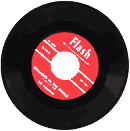 I don't know if Kim Kardashian really broke the internet - it seems to be working just fine now - but the internet certainly broke the traditional music business. That's what this book is all about.
I don't know if Kim Kardashian really broke the internet - it seems to be working just fine now - but the internet certainly broke the traditional music business. That's what this book is all about.
Author Stephen Witt traces the history of digital music piracy, from the German engineers who invented the mp3 format to the bootleggers to the music executives, such as Doug Morris, whose pay got larger and larger as the music business got smaller and smaller.
I found the book fascinating not only on the basis of the story itself but on the business lessons about technological obsolescence. I found only one error: those ancient 45 rpm records were not "vinyl pressings" - they were made by injection molding black polystyrene.
Just how dead is the CD? In 2014, only one album - Taylor Swift's '1989' - was certified platinum.
Recommended. (posted 10/1/15, permalink)
'Dealing With China: An Insider Unmasks the New Economic Superpower' by Henry M. Paulson Jr.
Let's start with my preconceived notion that China is not our friend. Our 2015 trade deficit with China is projected to exceed $330 billion dollars. And our chief 'export' to China is used cardboard. As for trying to decipher the ledgers of the China state economy, such inscrutable chaos hasn't been observed since 1951 when two large lorries carrying ink and eradicator crashed horrifically into a naughts and crosses tournament in Milton Keynes. "Oh, the humanity!"
Hank Paulson, former head of Goldman Sachs and Treasury secretary under George W. Bush, had a pivotal role in opening up China to private enterprise. He knows more about China, its politics and the players behind it than most Westerners. In general, Paulson posits that it is better to help the Chinese rather than be antagonistic toward them.
The book has its share of tedium and there is a lot of name-dropping and the author generously patting himself on the back. Nevertheless, there are decent anecdotes and a good telling of China's history from 1978 onward. Much of the book is a collection of Goldman Sachs' business success stories. In the final chapters, Paulson offers insights and shares his concerns about 21st Century China. It is by no means a financially-stable nation yet and its policies are not free market in the least. China is now flexing its military muscle and is unhappy with America's friendliness toward nearby nations such as Japan and the Philippines.
Paulson has no crystal ball into the future, nor do any of us. If you're looking for answers about what U.S.-China relations will be like in 2030, you won't find them here.
In any case, the book offers insights into how China works and is, therefore, a recommended read. (posted 9/23/15, permalink)
'Daddy Stop Talking!: And Other Things My Kids Want But Won't Be Getting' by Adam Carolla
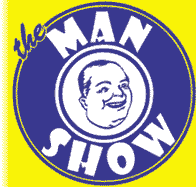 I first became aware of Adam Carolla when he was the cohost of the late, great 'The Man Show'. I really enjoyed Adam's first book, 'In Fifty Years, We'll All Be Chicks', published in 2011.
I first became aware of Adam Carolla when he was the cohost of the late, great 'The Man Show'. I really enjoyed Adam's first book, 'In Fifty Years, We'll All Be Chicks', published in 2011.
He was hilarious back then. Now - not so much. I found only a few things that made me chuckle:
• Adam's daughter ice skates and needed a unitard which cost almost $200. Adam noted that unitard sounded "like a mythical special-needs horse."
• Carolla observed that the menu at The Cheesecake Factory was "as thick as Oprah's ankle."
• He wrote that it "occurs to me that the Goodyear blimp is a weird thing to represent a performance tire. Blimps move slower than a donkey and use no tires. If everyone drove a blimp, Goodyear would be out of business. Why'd they go with that? This would be like if Jenny Craig's mascot was a manatee."
'Daddy Stop Talking!' is Adam's book about parenting. Once again, he spends countless words berating his own parents. I'm sick and tired of reading about what jerks his own parents are. This has been covered numerous times in his other books. Even Christina Crawford gave it a rest after one book.
What Carolla wrote about his family, especially about his spoiled and ill-behaved daughter made me feel a bit sad. Keep your dirty laundry to yourself, Adam.
Bookwise, Adam Carolla has jumped the shark. There's nothing insightful here and laughs are infrequent.
Verdict: Don't waste your time. (posted 9/15/15, permalink)
'Superpower: Three Choices for America's Role in the World' by Ian Bremmer
Ian Bremmer criticized America's directionless foreign policy, noting that such ambivalence has become prohibitively expensive and dangerous. Bremmer wants the U.S. to develop a resolute strategy and offers three different possibilities.
This is a thought-provoking book but, in his attempt to present three scenarios with some objectivity - offering sound arguments for and against each of these choices, the words and ideas soon became boring to me.
That said, I have two problems with the material presented here. First, there is a lot of Monday morning quarterbacking. That would be fine, except that it takes 50 years or more to see how some scenarios turn out. It is now just over 43 years since Nixon's historic overture to the Chinese. Given that China has become a predatory economic powerhouse, ignoring patent laws and general business practice, I'm still wondering if our rapprochement with the Middle Kingdom was a such a good idea.
Secondly, Bremmer argues for a consistent strategy. That sounds fine on the surface, but in our fast-changing world, I'm not sure that fixed strategies are relevant. In today's business world, tactics and technology are obsoleting long-term strategies.
I don't have the answers here, but I'm not so sure that Ian Bremmer does either. This book will make you think but I'm not sure you'll reach any substantive conclusions as a result of reading it. (posted 9/8/15, permalink)
'Who Built That: Awe-Inspiring Stories of American Tinkerpreneurs' by Michelle Malkin
This is a 'bookend' tome. Author Malkin begins her book with a screed against Barack Obama and his anti-capitalist buddies with a prominent mention of his famous 2012 'you didn't built that' remark - a slap in the face of every entrepreneur and business owner in America. I posted my reaction to his remark here.
Michelle Malkin concludes her book discussing another anti-business move from the Obama administration, "the Orwellian-titled 'America Invents Act' of 2011." The first and last chapters are fact-filled but what was far more interesting to me was the material in between. There you'll find stories of various inventors - their trial, tribulations and successors.
Some of the tales are from the 19th and early 20th centuries (paper, glass manufacture, Hires Root Beer, etc.). While those stories are fascinating, they're difficult to relate to in the 21st Century. On the other hand, the story of how Croatian immigrant Anthony Maglica started his $400 million Maglite flashlight business in a rented garage caught my interest. The book is full of remarkable stories of business success.
My biggest complaint is that Malkin invents a new word, 'tinkerpreneur', to replace the word inventor. I don't care for the word. It's demeaning because successful businesses don't just invent and tinker - they plan, they work long hours, they market and they sell. Michelle is obviously in love with the word because she uses tinkerpreneur over and over throughout the book - to my great annoyance.
That said, this is a good book and definitely worth a read. (posted 9/3/15, permalink)
'When To Rob A Bank: And 131 More Warped Suggestions and Well-Intended Rants' by Steven D. Levitt and Stephen J. Dubner
These guys are the authors of the wildly popular bestseller, 'Freakonomics' - a book I've never read. My bad.
'When To Rob A Bank' is a collection of blog postings by the authors. Since I had never read the blog, all of the material was new to me.
The book contains mostly short posts about a variety of subjects including: Why don't flight attendants get tipped? If you were a terrorist, what/how would you attack? And, why does KFC always run out of fried chicken?
I thought the book was mostly fun and thought-provoking on a bunch of offbeat, economics-related topics. It's an easy, quick read.
Verdict: Recommended. (posted 8/26/15, permalink)
'The Residence: Inside the Private World of the White House' by Kate Andersen Brower
The Residence claims to offer an intimate account of the service staff of the White House, from the Kennedys to the Obamas. Not so much, I'm afraid. There's a dearth of revealing stuff here; the book contains mostly things you've read elsewhere.
You'll find every synonym for 'discrete' employed somewhere in this poorly-written and chronologically-confused book. It offers little insight, is devoid of new material and is boring. A few parts were good: the routines and regimen that make the house run kept my interest. As did the staff's response to 9/11, when it was thought that the White House might be a target. But that's about all.
Verdict: Not worth the bother. (posted 8/20/15, permalink)
'Live Right And Find Happiness (Although Beer is Much Faster): Life Lessons and Other Ravings' by Dave Barry
I always look forward to Dave Barry's end-of-year summaries. But, sometimes you just run out of funny. And that's what happened with this book.
Yes, it had a couple of moments. Dave describing the true nature of Home Depot as "a giant store chain that runs TV commercials in which eager, attractive young couples, assisted by helpful smiling Home Depot employees look excitedly at the samples or pieces of wood and then - approximately eight seconds later, after a brief scene in which they are wielding paint brushes or drilling a hole while wearing safety glasses - they're standing happily in a brand-new modern kitchen that they did entirely themselves." Of course the reality is much different. Dave posits that those drug commercials which are full of disclaimers should be the model for Home Depot. Or maybe just a truthful slogan: "Home Depot. You can't do shit yourself."
I also enjoyed Dave's rant on Google Glass, which concluded that, if you wear them, "You will look like a douchebag."
These moments of mild humor and absurdity are not enough to save the book. Sorry, Dave.
Verdict: Skip it. (posted 8/12/15, permalink)
'Born With Teeth: A Memoir' by Kate Mulgrew
When I began this memoir, I thought I was reading one of Kurt Vonnegut's more 'out there' novels - the ones with characters one would never encounter in real life - in Mulgrew's case, a mother who brought her ovaries home in a jar, placed it on the mantle, gathered her many children around and told them that "this is where you came from."
Kate Mulgrew is an actress noted for her roles as Captain Kathryn Janeway on 'Star Trek: Voyager', Mary Ryan on 'Ryan's Hope' and, the role I remember best, 'Mrs. Columbo'. And she really was born with two teeth, which soon had to be pulled.
Humility is not a word in Kate Mulgrew's dictionary. She is overly me-centric, it seemed but she has a flair for detail and carries a backpack full of anecdotes. The book is witty and poignant, especially when, as a young unwed mother, she gave her first-born up for adoption. Her life is a roller coaster of ups and downs. But the stories are well-told.
Unfortunately, the memoir came to an abrupt halt as if it were equipped with ceramic racing brakes - screeeech, the end. It was abrupt and without explanation. I had to Wiki to learn that her wacky mom finally succumbed to Alzheimer's and that Mulgrew did eventually marry her soul-mate, Tim Hagan, but it didn't last and they divorced. That was a let down.
Verdict: It's a compelling page-turner spoiled by an abrupt ending. (posted 8/6/15, permalink)
'Reagan: The Life' by H.W. Brands
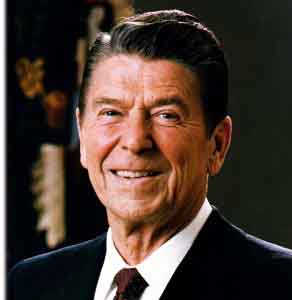 Author Brands, in his detailed, almost 800 page biography, establishes Ronald Reagan as one of the two great presidents of the twentieth century, a true peer to Reagan's idol, Franklin Roosevelt. This is interesting, because, in 1988, 'noted' historian Arthur Schlesinger (who should have known better - it takes 30-50 years to develop perspective on any president), wrote, "A few years from now, I believe, Reaganism will seem a weird and improbable memory, a strange interlude of national hallucination, rather as the McCarthyism of the early 1950s and the youth rebellion of the late 1960s appear to us today." Schlesinger couldn't have been more wrong.
Author Brands, in his detailed, almost 800 page biography, establishes Ronald Reagan as one of the two great presidents of the twentieth century, a true peer to Reagan's idol, Franklin Roosevelt. This is interesting, because, in 1988, 'noted' historian Arthur Schlesinger (who should have known better - it takes 30-50 years to develop perspective on any president), wrote, "A few years from now, I believe, Reaganism will seem a weird and improbable memory, a strange interlude of national hallucination, rather as the McCarthyism of the early 1950s and the youth rebellion of the late 1960s appear to us today." Schlesinger couldn't have been more wrong.
The author followed a young Ronald Reagan as his ambition caused him to leave his small town in Illinois to become a radio announcer and eventually, a movie star. When his acting career plateaued, he became the voice of television's 'General Electric Theater', making him an spokesman for 1950s corporate America. Then Reagan entered politics, becoming governor of California. That started him on a path which led to his election in 1980 as president of the United States.
Brands noted that Reagan accomplished much during his two terms. He defeated Soviet communism, revived conservatism and created economic revolution. This thorough biography presented much political history along with information about Reagan career path in a manner that is interesting and easy to read. The book is balanced, pointing out that Reagan's commitment to the big picture big goals, left him less focused on the implementation details, which he left to subordinates. This often leading to troubles, the Iran-Contra affair being just one.
I enjoyed the book. My view is that President Reagan saved America. By the end of the Carter Era, our country was devastated. Our currency was so devalued it was a joke. The stock market was back at the same levels of 14 years before. Inflation was out of control - business loan interest rates were well-above 20%. Business conditions were stagnant and had been so for over five years with the gum-mint micromanaging (a Jimmy Carter trademark) in an attempt to keep the ship from sinking.
Many years ago, I predicted that future historians would judge Ronald Reagan as the greatest President of the 20th Century, eclipsing FDR and others who have been 'sainted' by present-day historians. Reagan saved this country, rescuing us from the brink of insolvency. And gave us back our pride and can-do spirit. And I watched it all unfold from my small-business-owner vantage point.
I've been to the Reagan Presidential Library twice and enjoyed both visits. I recommend this book as well as a visit to the Simi Valley Library. (posted 7/29/15, permalink)
'Popular Economics: What the Rolling Stones, Downton Abbey, and LeBron James Can Teach You about Economics' by John Tamny
Author John Tamny serves as a Forbes editor as well as an editor of RealClear Markets. He uses real-world examples from sports, movies and popular culture to demonstrate economic principles. The author writes in an understandable style, making the book an easy read.
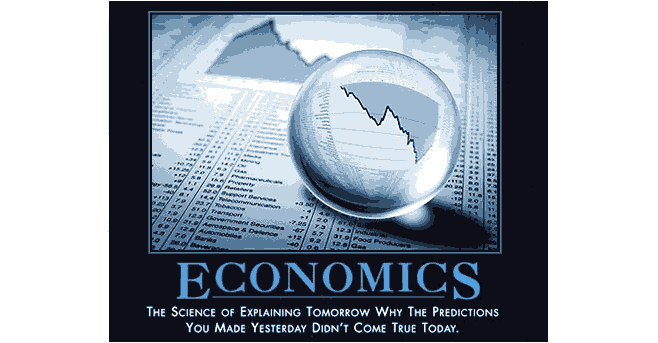
I agree with almost everything the author espouses except for two things.
• The first is that free-trade and the resultant outsourcing is a good thing. I've changed my mind about this several times over my life. I currently believe that we need fair trade, not free trade. Or maybe I should call it two-way-street free trade. When a country builds barriers to our products and we're unable to convince said country to lower such barriers, it's OK erect a few barriers of our own.
In the first 3 months of 2015, we had an almost $13 billion trade deficit with our NAFTA 'partner' Mexico - a rate of over $50 billion annually. Our trade deficit with China is projected to exceed $330 billion dollars. And our chief 'export' to China is used cardboard. For every dollar exported to our new pal, Vietnam, we import over five bucks.
Manufacturing is vital to the economy of the United States because it is a generator of wealth. Ha-Joon Chang of Cambridge University has written that "production is the ultimate foundation of any economy." Taking low-cost raw materials (wood, baking flour, steel) and processing them to produce much more expensive items (furniture, cakes, automobiles) creates profit. This in turn produces prosperity - for individuals and for a nation.
• The second area of the book with which I had difficulty was the concept that the financial crisis and resultant great recession was not due to the mortgage meltdown. Said meltdown was caused by unprecedented and irrational lending practices by mortgage lenders, encouraged by the government. This brought about a grave financial crisis, in my view. For details, see my review of 'Hidden In Plain Sight: What Really Caused the World's Worst Financial Crisis and Why It Could Happen Again'.
Despite these two reservations, I recommend this book. It is a good read and much of what the author writes is dead-on correct. (posted 7/23/15, permalink)
'Between You & Me: Confessions of a Comma Queen' by Mary Norris
The author has spent over 35 years in The New Yorker's copy department, maintaining its celebrated, if quirky, grammatical standards. Prior to that, Mary Norris held a variety of jobs - some odd including Foot Checker at a public pool in Cleveland and delivering milk as a 'milk lady'.
The book is a mixture of humorous observations, reminiscences and details of proper grammar and punctuation. The quality of book varies between entertaining and tedious, depending on the subject matter. Here are some observations:
• I learned that Norma Loquendi - Latin for "the norm of speaking" - is also the goddess of proper word usage (inside joke at The New Yorker).
• I also learned what 'diaeresis' is. I thought it was a bowel disorder. In my view, the author devoted waaaay too much time to this subject and I found myself skipping and skimming pages. I was bored with the sections on colons, semi-colons and dashes, too. But maybe it's just me.
• Change doesn't come easily at The New Yorker. One employee had been pestering the style editor, Hobie Weekes, for years to eliminate the diaeresis. "Weekes seemed to be weakening. He told her that he was on the verge of changing that style and would be sending out a memo soon. And then he died. This was in 1978. No one has had the nerve to raise the subject since."
• Ms. Norris also devotes much ink to apostrophes. She relates the story about a group of sailing enthusiasts who decide to start a mail order company "specializing in nautical goods. They named it Land's End, after the fabled westernmost tip of Cornwall." (I actually visited the place in 1995; it's quite windy and more than a bit touristy.) Anyway, the company's first catalog had the title Lands' End due to a printing error. The firm couldn't afford to reprint the catalog and the misplaced apostrophe remains to this day.
• Pikes Peak, Harpers Ferry and other notable American attractions lack apostrophes because Teddy Roosevelt killed them off in 1906.
• There are stories about the peculiarities at The New Yorker. In the old days, "when your pencil point got dull, you just tossed it aside and picked up a new one. There was an office boy who came around in the morning with a tray of freshly sharpened wooden pencils. And they were nice long ones - no stubs." Pencil Boy - not exactly a resume builder, eh?
• Norris devotes much space to pencils and I found that part of the book as well as her treatise on pencil sharpeners most interesting. I learned a lot, too.
• I never knew that there was a Pencil Sharpener Museum. There is. It's in Ohio and Mary Norris visited it.
• Here's a Norris quote about word obsolescence: "'Whom' may indeed be on the way out, but so is Venice, and we still like to go there."
Verdict: Uneven but has its entertaining moments. Recommended. (posted 7/15/15, permalink)
'The Wright Brothers' by David McCullough
The Wright Brothers are awarded merely a single sentence in most school history textbooks but there's much more to the vrothers' story and it deserves telling. David McCullough manages to flesh out the story line with much detail in this 301 page tome, yet the story never bogs down or becomes lost in tedious trivia. I suppose that's why the author won two Pulitzer Prizes (so far).
Wilbur and Orville Wright taught the world how to fly. Consummate tinkerers and mechanics who kept detailed records of their experiments, they learned from their various trials and eventually made in a successful powered flight on the Outer Banks of North Carolina in 1903. The Wrights were self-funded; they lived frugally and owned a successful bicycle business in Dayton, Ohio. Compare that to the Smithsonian Institute which spent $70,000 in taxpayer dollars - almost $2 million in today's currency - on an albatross of a plane that crashed into the Potomac River. Another failed government boondoggle.
McCullough wrote, "In early 1889, while still in high school, Orville started his own print shop in the carriage shed behind the house ... Interested in printing for some while, Orville had worked for two summers as an apprentice at a local print shop. He designed and built his own press using a discarded tombstone, a buggy spring, and scrap metal." This kind of ingenuity and moxie demonstrates the clever industriousness that characterized the brothers Wright.
This is a well-done, easy-to-read biography; I highly recommend it. (posted 7/9/15, permalink)

'17 Carnations: The Royals, the Nazis and the Biggest Cover-Up in History' by Andrew Morton
This book is about Edward VIII, Duke of Windsor and once king of Great Britain, until he abdicated the throne to marry American divorcee Wallis Simpson, the Nazi plot to make him a puppet king after the invasion of Britain and the attempted cover-up of the duke's pro-German inclinations and possible collaboration with Hitler and his minions.
The claim to 'biggest cover-up'? I think not. Most of the book is a rehash of old news, rumors and speculation. There is claimed to be new documentation but everything is presented in such tedious detail with so much repetition that the book becomes a 384-page bore. It was a struggle to finish but might have been interesting as a six-page magazine article.
Morton also details Edward and Wallis' empty, superficial and selfish lives after his abdication, but we already knew about that. In the end, the Duke and Duchess of Windsor were never accepted by British royalty and were admired primarily by the easily-dazzled kind of people who are so fond of the Kardashians today.
Verdict: Skip this one. (posted 7/1/15, permalink)
'Being Mortal: Medicine and What Matters in the End' by Atul Gawande
Harvard-trained surgeon and medical writer Atul Gawande has written a great but unpleasantly depressing book about the end of one's life - the chronic sickness of old age and the bumpy slide into death.
Reading it, you'll find that dying ain't easy, even in 21st Century America. Someone must champion the patient and his/her needs and wants. That 'someone' must be the patient, who may often be too sick, drugged or confused, or the patient's family, who may also be confused as well as uninformed.
On page 76, Dr. Gawande wrote about nursing homes. "In the horrible places, the battle for control escalates until you get tied down or locked into your Geri-chair or chemically subdued with psychotropic medications. In the nice ones, a staff member cracks a joke, waves an affectionate finger and takes your brownie stash away. In almost none does anyone sit down with you and try to figure out what life really means to you."
Modern medicine has transformed serious injuries and infectious disease from harrowing experiences to satisfactory - and sometimes miraculous - outcomes. But there are few miracles at the end of life. The book tells some poignant stories as it tackles this difficult topic but, sadly, offers only vague recommendations.
I was hoping for a 'Ten Ways To Improve Your End-of-Life Experience'. If such a thing exists, you won't find it in this book. (posted 6/25/15, permalink)
'Dead Wake: The Last Crossing of the Lusitania' by Erik Larson
The term 'nonfiction chronicle' is easily applied to Larson's books. They are based entirely on well-researched facts but are written with the excitement and intrigue of a novel. Erik's earlier works, 'In The Garden Of Beasts' and 'Devil in the White City', exemplify the genre.
Larson's narrative story centers on the luxury British ocean liner RMS Lusitania, whose sinking by a German submarine became a propaganda opportunity for Great Britain and helped shift U.S. public opinion against Germany, eventually bringing America into World War I.
I was surprised by the actions of Winston Churchill, whose Admiralty failed to protect passenger ships, despite so much espionage information collected by his secret 'Room 40' which clearly revealed the danger to ships in the Irish Sea. I was also shocked at Churchill's excoriation of the Lusitania's captain, William Thomas Turner, who was blameless.
This was a good book but it was not as focused as Larson's earlier works. For example, the entire love story between President Woodrow Wilson and his soon-to-be second wife could have been eliminated, since it added nothing to the primary narrative and bored this reader.
Verdict: Recommended. (posted 6/19/15, permalink)
'Hidden In Plain Sight: What Really Caused the World's Worst Financial Crisis and Why It Could Happen Again' by Peter J. Wallison
This is a through and detailed - sometimes too detailed for my taste - book which demonstrates with facts and graphs that the root cause of the 2008 financial meltdown was the continued loosening of the Community Reinvestment Act, an insidious government mandate which forced lenders into relaxing their mortgage underwriting standards for loans to inner-city borrowers to the point that borrowers of all kinds were lying about their income and ability to repay loans.
You'll get no argument from me on that score. In September 2008, I wrote, "Let's not forget that the Clinton administration, obsessed with multiculturalism, expanded the scope of the Carter-era Community Reinvestment Act, dictating where financial institutions could lend and thereby facilitating the birth of the high-risk subprime loan market. And Congress - Republicans and Democrats - went along, mandating substandard lending to low-income groups. And, as the high-risk loans mounted, the same Congress - under the gun of political contributions - continued to promote the fiscal follies of Fannie Mae, Freddie Mac and their ilk.
When the Fed cut interest rates to 1% in 2003, it created an enormous credit bubble. Leverage-based strategies became so lucrative that many financial market players jumped to leverage up the most leveraged asset on Main Street – housing." In 1989, only 1 in 230 homebuyers bought a house with a down payment of 3% or less. In 2003, the ratio was 1 in 7. By 2007, it was 1 in 3.
For many years (30 that I know of), there was a rule in the real estate business: You can't buy a house priced at more than 2.5 times your annual income. Sometimes, if you had a really secure job, exceptionally good credit and/or a larger-than-normal down payment, lending institutions would go to 3.0. This changed in the late 1990s. The magic ratio grew every year, peaking at 5.0 (nationally), an unbelievable number.
California was vulnerable to foreclosures because the median value of owner-occupied housing in 2007 was 8.3 times the median family income, while the 2007 national average was only 3.2 times higher than median family income (in 2000, it was lower still at 2.4). California had only 10% of the nation's housing units but it had 34% of foreclosures in 2008. Almost 90% of all troubled mortgages and foreclosures are concentrated in California, Florida, Nevada and Arizona.
5.0?! 8.3?! No wonder the housing market crashed.
Banks that should have known better made huge loans to people who had insufficient verified income, assets or collateral to purchase houses. These institutions were later shocked to learn these folks would not repay their obligations. Well, duh!
 In other words, by soliciting borrowers who had low credit scores and no money for a down payment, various financial institutions were being inundated with applications from the J. Wellington Wimpys. Wimpy was that character from those old Popeye cartoons: "I'd gladly pay you next Tuesday for a hamburger today." Yeah, right.
In other words, by soliciting borrowers who had low credit scores and no money for a down payment, various financial institutions were being inundated with applications from the J. Wellington Wimpys. Wimpy was that character from those old Popeye cartoons: "I'd gladly pay you next Tuesday for a hamburger today." Yeah, right.
Crap mortgage loans were combined and bundled into cleverly decorated packages but - let's face it - they were still sacks of crap. These foil-wrapped stench bombs were marketed by investment houses as fixed income 'investments' which offered better returns than certificates of deposit. I've heard that many were sold to foreign buyers when the dollar was down: "Just think how much you'll make when the dollar goes back up!" Yes, think of it as a large, diversified container of feces with possible upside potential.
Then the housing bubble burst. When the highly-paid CEOs of Fannie Mae and Freddie Mac saw everything falling apart, they ran to their buddies in Congress - Banking Committee Chairman Chris Dodd, Barney Frank, Barack Obama, et al. (After all, they had given Obama more than $126,000 in less than four years.) While Fannie and Freddie were running off the rails, Dodd, Obama, Frank and Congress looked elsewhere.
"Too many financial firms (banks, mortgage companies, investment firms, etc.) have been busy courting stupid people who haven't a clue how to manage money. Lead by Congressional Banking Committee members who haven't a clue how to manage money either."
Peter Wallison warned of the perils of government manipulation of housing finance for a decade before the financial crisis of 2008. He was a solitary voice in a gaggle of foolish experts. Sadly, the foolish experts prevailed and have passed laws such as Dodd-Frank which will do nothing to prevent another housing bubble and collapse.
Verdict: Worth the (long and detailed) read. (posted 6/11/15, permalink)
'So, Anyway ...' by John Cleese
Let the record show that I am a big fan of Monty Python. I've watched every movie in a theater - not just on video. In 2007, I saw 'Spamalot' and enjoyed every minute of it.
So, anyway, I was expecting Cleese's book to be funny and informative, in the manner of Billy Crystal's '700 Sundays'. Sadly, that didn't happen.
Cleese's book was wordy and boring. It took 65 pages before Cleese turns 13. This so-called autobiography is very incomplete, with no chronicle of either the 'Monty Python' or 'Fawlty Towers' years. Cleese's second, third and forth wives - and his two children - get no mention at all.
Verdict: Staggeringly dull, despite high expectations. (posted 6/3/15, permalink)
'Empire Of Cotton: A Global History' by Sven Beckert
This book relates the epic tale of the empire of cotton with its rise and fall in various locations throughout the world and how events influenced the cotton business while the cotton business influenced world events.
The empire of cotton was, from the beginning, the focus of constant global struggle between slaves and planters, merchants and statesmen, workers and factory owners. Slavery of one sort or other has always been part of the cotton business, whether it be African slaves (who were sold in Africa for woven cotton goods, usually from India) or various degrees of indentured servitude. Or sharecropping. Because growing cotton has always been a labor intensive process, the plantation owner with the lowest wage rate gets the business.
Well before the advent of machine production in the 1780s, entrepreneurs replicated ancient trades and skills learned in Asia, primarily India, and combined them with the expropriation of lands in the Americas and the enslavement of African workers to disrupt the traditional market. The world was transformed by these actions and by the development of automated processing equipment.
Meanwhile traders, manufacturers and governments used whatever shenanigans they could - tariffs, military actions, child labor and slavery - to gain market share. It is an interesting story and the reader is given a different view of history by Beckert.
Cotton remains a ubiquitous global product. Anyone reading this book report is probably wearing at least one article made from cotton. Although that cotton may have come from a field in Ubekistan, woven into cloth by a mill in China, assembled into a garment in Vietnam or Hondouras and ultimately sold by a mail order firm almost anywhere in the Northern Hemisphere.
Beckert has written a comprehensive and informative book. It is very detailed and, at times, a tedious read but it is worth the effort. Recommended. (posted 5/28/15, permalink)
'American Sniper: The Autobiography of the Most Lethal Sniper in U.S. Military History' by Chris Kyle
U.S. Navy Seal Chris Kyle recorded the most career sniper kills in United States military history and has written this book about his experiences, particularly in Iraq.
While I enjoyed the book and found it informative, the writing could have been better. The passages written by Chris' wife Taya added almost nothing to the narrative and could have been left out. I found them distracting.
Kyle was a brave and patriotic soldier and his tragic death by a fellow soldier suffering from PTSD, whom Kyle was trying to help, makes the stories in the book both poignant and compelling.
That said, a better book about one soldier's experience in the Middle East war is 'Into The Fire: A Firsthand Account of the Most Extraordinary Battle in the Afghan War' by Dakota Meyer and Bing West. (posted 5/20/15, permalink)
'Food: A Love Story' by Jim Gaffigan
The author is a stand-up comic, who jokes about food and his obsession with eating. He rhapsodizes about the joy of bacon, enumerates the many intrusions of kale into our food culture and rants about McDonalds, Hot Pockets, Waffle House and the lure of Cinnabon. (I've often wondered if Germany has a chain of Luftwaffle Houses.)

Jim is not a fan of fruit in general and especially those overpriced cut-fruit 'Edible Arrangements: "At some point during the turn of the last century it became acceptable for people to send out cut fruit arranged like flowers. I'd like this to stop. I understand you might find nothing wrong with someone sending you a beautiful arrangement of fruit on a stick that you eventually throw out. I realize that instead of sending flowers to say congratulations or sorry for your loss, people want to send these expensive fruit arrangements, but frankly I find it unsanitary. Cut-fruit always seems like its on the verge of going bad: 'Our deepest sympathy ... for your impending diarrhea.' I always imagine the person arranging the cut-fruit display in a robe watching 'The View' and occasionally sneezing. And honestly, why to "edible arrangements" have to be fruit? Can't you just send me a bouquet of meatballs?"
This is a fun, easy-to-read book, although some sections of the book fell flat and others were redundant. A bonus is that the book is littered with many small black-and-white food-involving photos of the author and his family, including one where Gaffigan is shown with his own food truck, when he was cast as a food truck operator on an episode of 'Portlandia'.
Verdict: Worthwhile. (posted 5/14/15, permalink)
'Mom in the Movies: The Iconic Screen Mothers You Love (and a Few You Love to Hate)' by Richard Corliss
This is an oversized coffee-table style book which would make a nice Mother's Day gift. It is filled with photographs - mostly black and white - of mothers portrayed on the silver screen along with stories of movie moms - good, not-so-good, bad and very bad, such as the uncharacteristically evil Angela Lansbury in 'The Manchurian Candidate'. Or the terrific and terrifying Fay Dunaway portrayal of Joan Crawford in 'Mommie Dearest'. "No more wire hangers!!!!!"
It's a clever and unique premise for a book.
The book begins with two forewords - one written by Debbie Reynolds and the other by her daughter Carrie Fisher. I found them trite and boring. But plow ahead and you'll be rewarded as author Richard Corliss brings many celluloid moms to life in his own words. He begins with a brief tribute to his own mother, Elisabeth, who taught grade school in the Philadelphia public school system and lived to the age of 100.
'Mom In The Movies' is a literate and witty journey. Because Corliss was such a film buff, many of the movies are older - pre 1970 - and may be unfamiliar to casual filmgoers, especially younger ones. Nevertheless, the book is a fun trip down movie memory lane.
Recommended. (posted 5/8/15, permalink)
'Zero To One: Notes on Startups, or How to Build the Future' by Peter Thiel
Way back in 1981, Deaver Brown penned 'The Entrepreneur's Guide'. It is an excellent book; Deaver was president and co-founder of Cross River Co. which developed and manufactured the Umbroller, the first umbrella-style folding child stroller. His book gave specific advice backed up by personal anecdotes.
'Zero To One' reminded me of Brown's Book except that it is very 21st Century and directed at the tech/internet industry - not surprising since Peter Thiel is co-founder of PayPal.
Thiel posits the contrarian premise that we live in an age of technological stagnation, despite ever-increasing advances in mobile devices. He claims that progress can be achieved in any industry or area of business. It comes from the most important skill that every leader must master: learning to think for yourself. And, I would add, applying technology to your non-tech business, especially in areas ignored/overlooked by your competitors.
This book delivers refreshing ideas on how to create value in your market segment and offers insight about how people value companies in today's environment.
I highly recommend this thought-provoking book to anyone starting a business, especially a tech one. (posted 4/29/15, permalink)
'What If?: Serious Scientific Answers to Absurd Hypothetical Questions' by Randall Munroe
After all the serious nonfiction I've been reading, it was nice to take a break and read this palate-cleansing book. Munroe's tongue-in-cheek science along with his stick-figure drawings makes for a delightful read. But more than that, the book's fun and knowledge value far exceeded expectations.
Inside you'll find answers to questions such as 'What would happen if the Earth stopped spinning?', 'What would happen if you tried to hit a baseball pitched at 90% of the speed of light?', 'How fast can you hit a speed bump while driving and live?', 'If there was a robot apocalypse, how long would humanity last?' and more. Parts of the book had me laughing out loud.
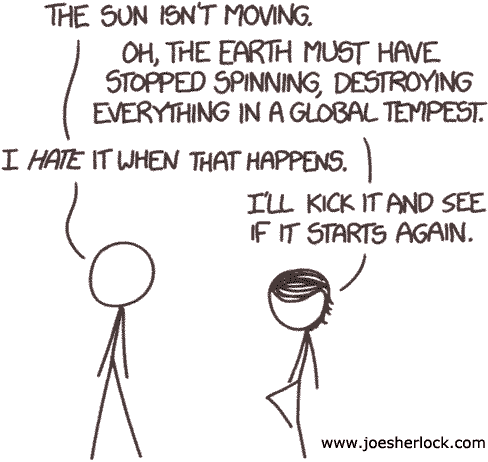
This book is a quick read recommended, especially for those interested in quirky scientific data and answers to wildly speculative science questions. My only complaint is that it didn't answer the question, "How big a pile of whoopie cushions would it take so that one could survive a 20,000 foot jump from an airplane without injury?" (posted 4/23/15, permalink)
'Special Deluxe: A Memoir of Life & Cars' by Neil Young
Rocker Neil Young dropped out after 10th grade; you can easily tell by his writing which blends stream-of-consciousness with grammatical errors and pointless car stories which have neither arc nor substance.
Young recently published his memoirs, so this book is supposed to be about his memories triggered by cars he's encountered. It's not. Young wanders all over the place from amplifiers, to guitars, to gigs and to his sanctimonious musings on how badly his dad's 1951 Monarch sedan hurt the environment shedding about 1,296 pounds of carbon dioxide into the atmosphere every time they made a round trip from Canada to Florida. Although he enjoyed the trip, he has now turned his family's 1950s-era vacation into a guilt trip, choosing to play the role of a skunk at a Sunday school picnic.
It is entirely possible that his dad's Canadian Mercury-clone drove past our neighborhood on the way back to Canada. If so, I give thanks for the carbon dioxide that helped the little evergreen bushes in our front yard grow big and strong.
Neil Young doesn't seem to care much about his cars - when they break down, he often abandons them by the side of the road. An ancient Pontiac hearse carried Young and his bandmates to their first rehearsals and eventually to sunny California. Then, while rolling down Sunset Boulevard, the old beast dropped its driveshaft. Young had it towed to a garage and never saw it again.
Writing in the 'Wall Street Journal', author and book reviewer Earl Swift noted that "what is missing from most of this book is introspection - about what moves him about cars in general and what has drawn him to those he has bought, beyond an arm's-length appreciation of their size or styling. He offers little insight into what he comes to love about them, and why. The resulting tale is strangely bloodless - less a fond and heartfelt reminiscence than a ledger of acquisition." Indeed.
The book contains illustrations of his various cars. Did Neil Young hire a professional artist such as one would do for - say - an album cover? No. He drew them himself. And they look like something done by a 12 year-old - with a crayon. Or a bad watercolor set. He has drawn a '47 Lincoln Continental coupe he once owned. Soon to be featured in my Autosketch collection is a pen-and-ink sketch of a '47 Lincoln Continental cabriolet which I drew in 1992. Compare:

I don't claim to be a professional artist but I would say to Neil, "If you can't draw, hire someone. Even me. Don't be such a cheapskate clod. Your readers deserve better."
In addition to being an weird guy who was always breaking up with bands, Young claims to be an environmentalist, although his statements show his lack of knowledge on the subject. (He's just one more phony celebrity flying around on private jets to save the planet.) This environmental ninnyhammer commissioned an electric 1959 Lincoln Continental, dubbed 'Lincvolt'. In 2010, it caught fire in a California warehouse, destroying an estimated $850,000 worth of Young's rock and roll memorabilia collection. The Lincvolt is supposed to be "environmentally sound" but it actually requires a team of chase vehicles habited by mechanics to follow it around, in case it breaks down which, apparently, it does a lot.
None of that has stopped Young from devoting the last part of his dreadful book a long harangue about the essential evil of fossil fuels and how we must save the Earth. Young once compared Fort McMurray, a Canadian oil town, to Hiroshima - a mistake with an apparent half life of strontium 90. Last October, he told radio host Howard Stern that the 'free world' ought to fight climate change rather than the Islamic State (ISIS). Young suggested that the U.S. is worse than terror groups like ISIS and Al Qaeda, because the terrorists have a mere 1% of the carbon footprint of the American military.
Verdict: This guy draws badly, writes poorly, makes ridiculous environmental assertions and is clearly a full-blown whack job. He's both a Rocker and Off His Rocker. Avoid this dull, unpleasant book at all costs. (posted 4/15/15, permalink)
'Killing Patton: The Strange Death of World War II's Most Audacious General' by Bill O'Reilly and Martin Dugard
'Killing Lincoln', 'Killing Jesus' and 'Killing Kennedy' were books about famous people being put to death by others. This book begins with the stated premise that General George S. Patton, Jr. died under mysterious circumstances in the months following the end of World War II. Here's the spoiler, folks: By the time you finish this book, you'll find the circumstances not-so-mysterious. Evidence of a murder plot is virtually nonexistent.
The book is a collection of tales and gossip about the final six months of World War II in the European Theater. While the book is a fairly easy read and mildly entertaining, it is neither a book about World War II nor a biography of Patton. I'm not sure what the book is, other than a line-extension of O'Reilly's mega-hyped 'Killing' series. Much of the book seems lifted from the 1970 movie, 'Patton'. It lacks cohesion and wanders about like a pre-war Opel Kapitan sedan.
Eisenhower and Bradley are poorly treated in this book - points of disagreement with many historical scholars. The same old tales are rehashed: Hitler was a serial farter, FDR was so deathly sick that he gave away everything to Stalin at Yalta, Stalin was inhumanly cruel, the concentration camps were the pits of Hell, etc.
Verdict: Not worth your time. That's the truth ... because The Spin Stops Here. (posted 4/9/15, permalink)
'How We Got To Now: Six Innovations That Made the Modern World' by Steven Johnson
The author has written a wonderful and interesting book exploring the history of innovation over centuries, tracing facets of modern life to early inventions and their development over centuries. Johnson examined unexpected connections between seemingly unrelated fields: how air-conditioning made the largest migration in human history possible - to desert cities such as Dubai or Phoenix. And how pendulum clocks helped trigger the industrial revolution. And how the birth of railroads ultimately caused time zones to be invented.
Johnson focused on six area of innovation: glass, cold, sound, clean, time, and light. He tells the tale of the accidental discovery of glass in the desert and then traces its use (and profound consequences) as it is developed for lenses, eyeglasses, telescopes and microscopes.
The book very much reminded me of James Burke's book and television series 'Connections'. The style of the book was reminiscent of the always-enjoyable Bill Bryson. The categories Johnson tackled make for fascinating stories - and he brings them to life with passion and style.
This was a delightful and insightful read; I highly recommend 'How We Got To Now'. (posted 4/3/15, permalink)
'Brief Encounters: Conversations, Magic Moments, and Assorted Hijinks' by Dick Cavett
This book is a collection of pieces from Cavett's New York Times blog. They are mostly about past events in his life but are not listed chronologically, which is a bit disorienting. Furthermore, the pieces are unedited, so when he writes about some blog comment about a past piece and then expounds obliquely on the comment, the reader is left maddeningly in the dark.
More than once, I had to Google what he was referring to, because he would dangle an item without elaboration, such as the guest who died on his television show. According to some audience members, Cavett turned and quipped to the decedent, "Are we boring you, Mr. Rodale?"
Cavett is an unabashed apologist for Groucho Marx ("the most supremely gifted comedian of all time," according to Cavett), Arthur Godfrey (I don't care what Dick says, that guy was the prototype for Lonesome Rhodes), John Lennon (post-Beatles lived-on-a-bed pompous druggie asshole - without him, we would have been spared Yoko Ono) and others. Originally from the Nebraska farmlands, Cavett has become a full-blown New York name-dropping, snobby liberal. And he hates New York at Christmas because all the "Dumbos from New Jersey" show up to see the big tree in Rockefeller Center. This makes Dick bail for Virgin Gorda in the Caribbean. See Dick run.
There are lots of swipes at conservatives in this book, the usual Liberal bogeymen: Cheney, Palin, Limbaugh, Guiliani, etc. For reasons not clear, Cavett has a special loathing for Rick Santorum; Dick pictured Rick S. Photoshopped into the Yalta picture in place of Roosevelt, "side by side with Stalin and Churchill. ... It would look like two redwoods and a spirea bush." Seemed mean-spirited to me.
I did like his stories about Mel Brooks, especially when Anne Bancroft was asked what it was like to be married to Mel, replied, "When he comes home at night and I hear his key in the lock, I say to myself, 'Oh good! The party's about to begin.'" He offered some good Jonathan Winters anecdotes as well.
His sketch of famous people were ... ummm ... sketchy because he drifted in and out of their lives randomly, it seems. Many of his observations border on the banal. The book's chapters were generally short but Cavett reminded readers in almost every one that he is a Yale graduate. I wanted to phone him and ask, "So, did you turn out to be a good locksmith then?"
Dick Cavett can be a witty guy. He never made me laugh out loud but his dry humor used to impress me. I guess I'm getting older because I'm now finding him to be a boring old fart.
Verdict: Don't bother. (posted 3/25/15, permalink)
'Double Agent: The First Hero of World War II and How the FBI Outwitted and Destroyed a Nazi Spy Ring' by Peter Duffy
How can you make a true life story about a Nazi double agent a dull book? I dunno ... but author Peter Duffy has figured out a way.
The story is about a German-American who managed to infiltrate New York's Nazi underground in the days leading up to World War II. William G. Sebold, approached the FBI and became the first double agent in the Bureau's history, the center of a sixteen-month investigation that led to the arrest of thirty-three enemy agents. Sebold was later relocated in perhaps the first example of a U.S. witness protection program.
There's an interesting story to be told here but the book rambles and jumps around, focusing on trivia and distracting details. Sadly, Sebold led an impoverished life after the war, became increasingly paranoid and died in a California mental asylum in 1970.
Verdict: Skip this one. (posted 3/18/15, permalink)
'Stonewalled: My Fight for Truth Against the Forces of Obstruction, Intimidation, and Harassment in Obama's Washington' by Sharyl Attkisson
The author is a seasoned reporter with a long and distinguished career with CBS. Over a 30 year career, Attkisson has exposed scandals and covered controversies under both Republican and Democratic administrations.
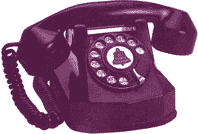 This book is mostly about the Obama administration's attempts to silence Sharyl, including having her phones wiretapped and her computer hacked. The general lack of support by a should-have-been-outraged CBS News is very telling.
This book is mostly about the Obama administration's attempts to silence Sharyl, including having her phones wiretapped and her computer hacked. The general lack of support by a should-have-been-outraged CBS News is very telling.
Reading the book provides increased understanding of the scandals that have characterized the Obama administration: Fast & Furious, green energy crony capitalism, Benghazi and Obamacare.
Here's an excerpt: "During the 2012 presidential campaign, Obama Treasury secretary Timothy Geithner was afforded the chance to meet with and spin network news managers off camera. According to those who attended, Geithner pretty much blamed all of the nation's economic troubles on the drought. His analysis became a basis for subsequent CBS Evening News story decisions that advanced the drought theory of economic weakness, helpfully pinpointing a factor outside the president's control and, therefore, one for which he could not be blamed. Naturally, this advanced Obama's case rather than that of his Republican opponent, Mitt Romney." Media bias, anyone?
And another: "Perhaps the greatest PR coup of all is that the administration's expert spinners successfully lead the media by the nose down the path of concluding there's no true controversy unless there’s a paper trail that lays blame directly on the president’s desk. Time and again, with each scandal and each damaging fact, Democrats and the White House read from the script that says ‘there's no evidence President Obama knew' or 'there’s no evidence of direct White House involvement.' Anything short of a signed confession from the president is deemed a phony Republican scandal, and those who dare to ask questions are crazies, partisans, or conspiracy theorists."
Verdict: A must-read. (posted 3/11/15, permalink)
'Agent Storm: My Life Inside al Qaeda and the CIA' by Martin Storm, Tim Lister and Paul Cruickshank
Morton Storm was a six-foot-one red-haired Dane, with a troubled youth - a brawler and a street gang member. He did jail time and, when outside, lived off Denmark's generous social welfare system. Socially and spiritually bankrupt, he became a convert to Islam, after reading a library book on the life of The Prophet.
He quickly becomes involved in the dark and dangerous world of militant Muslims and travels in the same circles as terrorists. After a decade of frustration living the jihadi life, he repudiates his religion and quickly becomes a double agent for Danish intelligence. Later, he does similar covert work for the British intelligence and the CIA, whom storm portrays unflatteringly.
The book is disturbing to read, revealing the extensive terrorist networks throughout the world, including the western world. The story itself and insight into the inner working of al Qaeda was fascinating. Unfortunately, the book often bogs down with too many names and too much unnecessary detail.
Verdict: Worth a read if you skim over the boring parts. (posted 3/5/15, permalink)
'The Way Forward' by Paul Ryan
In 2011, Congressman Paul Ryan introduced his 'Path To Prosperity' debt-reduction program - with a stripped-down budget going forward that included sweeping changes to federal expenditures, including entitlement spending. Rep. Ryan was trying to have an adult conversation with America about the looming insolvency of the growing welfare state, and he offered a serious, practical plan to fix it. Sadly, Obama and his Democratic minions in Congress were not interested in logic so Ryan's plan was left to die.
'The Way Forward' is an extension of the logical thinking behind the Path To Prosperity as applied to non-financial problems such as immigration, health care and social welfare programs of various types. The book convincingly argues that the Republican Party must remain true to its conservative principles while better communicating its message of self-empowerment to to those voting segments where it has limited success.
This book is an easy read with the author's ideas clearly stated. Recommended. (posted 2/25/15, permalink)
'Dr. Mütter's Marvels: A True Tale of Intrigue and Innovation at the Dawn of Modern Medicine' by Cristin O'Keefe Aptowicz
This book is about medicine as practiced in the early-to-mid-19th Century. The story revolves around Thomas Dent Mütter, a clever, quirky surgical innovator who pioneered plastic surgical techniques and was an early proponent of anesthetics.
If you want to know how primitive medicine was in The Good Old Days, this is the book to read. You'll learn about the gore, the unsanitary conditions and the screams of fully-awake patients during surgery.
Dr. Mütter seemed more motivated by compassion and wanted to alleviate suffering in his patients - a trait which was sadly lacking in some of his arrogant peers. The many techniques he developed became building blocks in the modern medicine practiced today.
Verdict: Very informative although it sometimes gets bogged down with details and side stories. (posted 2/20/15, permalink)
'Predator: The Secret Origins of the Drone Revolution' by Richard Whittle
This book covers the development and implementation of the Predator drone, a weapon that drastically changed modern warfare in an age where the enemy doesn't wear uniforms and hides among civilians.
Remote guided vehicles were once dismissed by military in most countries as fragile toys. The story begins with a driven Israeli inventor who moved to the U.S. and turned his Los Angeles garage into a drone laboratory. The drone concept became a reality despite politics, a reluctant Federal bureaucracy, scoffing by the Air Force's white-scarf fraternity and military infighting. Drones have evolved to become our best tool in the war on terror.
I learned much from this book, despite a few shortcomings. The author gets bogged down in bureaucratic details and I had trouble following the actions and exploits of the many characters - a combination of too many people, going off into the weeds with non-vital conversational details and too much jumping around story-wise.
Nevertheless, 'Predator' is a story worth telling and a generally good read. Recommended. (posted 2/12/15, permalink)
'Ford In Miniature' by Randall Olson
This large, color-photo-filled softcover book as lots of high-resolution photos and information about miniature models of American Ford, Mercury and Lincoln vehicles, most of them produced in 1:43 scale as limited-production, white metal models. The author is knowledgeable about the models themselves, the full-size vehicles they represent and the model car manufacturers. It was an educational and informative read for me. If you like model cars, I'd recommend it.
I had just found out about Olson's book, even though it was printed over eight years ago. I received it as a Christmas present. Reading the book illustrated the tumultuous changes which have occurred in the model car business in the relatively short time since this book was first published.
Many of the active manufacturers discussed in the book have either disappeared or gone dormant. I'd guess that close to half the scale model retailers listed in the appendix have closed or have substantially downsized. Internet retailing, the rise of lower cost, made-in-China models and competition from a proliferation of diecast model offerings has turned the white metal handbuilt market on its head.
Online magazine Model Auto Review noted that, "2014 has thrown up many challenges to Brooklin (one of the oldest makers of handbuilt models) who previously had the mid-price range largely to themselves and were very popular because they made available subjects which were generally only available in premium ranges. Although they have introduced more fine detail than before on their models and used "roof cages" to allow them to show chromed window surrounds they now sell at around the same price as many ranges of more detailed resin models which must influence sales volumes. Re-colours have allowed Brooklin to generate more interest in some models but care has to be taken to persuade buyers not to wait until the 'best color' is announced."
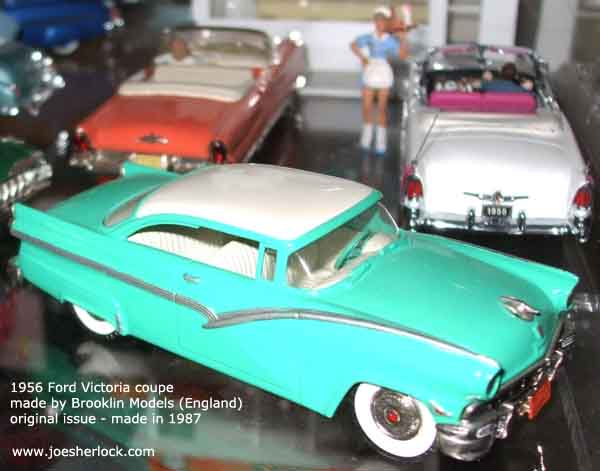
Being hand cast from low-melting-point soft metal alloy (usually some variation of pewter) in a high-cost manufacturing area (Bath, England), Brooklins are very vulnerable to lower-cost resin castings made in China. Resin flows better into molds, providing more detail. Small trim pieces are easier to cast in resin and attach to the main body, meaning chrome trim can be more economically produced.
In the late 1970s, small craft firms such as Brooklin, Western Models, Mikeansue, Mini-Marque and others were manufacturing scale models of automobiles brands which had been ignored by mass-market diecast toymakers such as Dinky and Corgi. Brooklin made cars like the 1933 Pierce Silver Arrow, '48 Tucker, 1958 Edsel and other obscure models. This strategy worked well for these small companies and they grew. Other firms followed suit, creating competition. Then the volume diecast companies began producing more '50s and '60s American models. Corgi, ERTL, Matchbox, Minichamps, Solido, Vitesse and Dinky entered the game, with Dinky offering its own version of the Tucker as well as a '58 Studebaker Hawk, '53 Buick Skylark and more. Buby of Argentina offered several well-made diecast Chevrolets, Fords and Mercuries of the 1950s.
The little models were often touted as 'investments', although, as I've previously written, time has shown that to not often be the case. Thankfully, author Randall Olson never brings the subject up - a smart move.
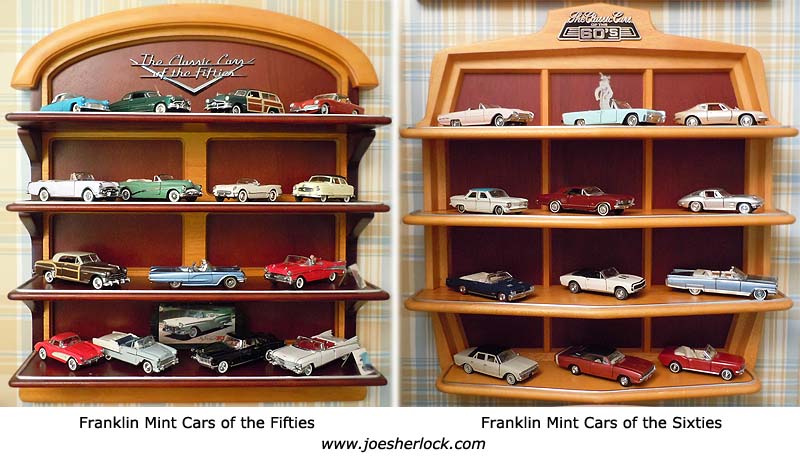
Later, Franklin Mint and Matchbox got in the game, adding expensive little 1:43 scale diecast models to their line. The market became saturated; people had bought every model they wanted and their display cases were full. The model car market began to collapse; brick-and-mortar retailers, internet sales outfits and model vehicle manufacturers dropped like flies. Matchbox Collectibles disappeared, Franklin Mint is a ghost of its former self, Danbury Mint stopped offering diecast vehicles and many of the smaller producers either closed or downsized substantially.
By the turn of the Century, the action had moved to mainland China where a variety of American model vehicles - old and new - were die-cast by Road Champs, Eagles Collectibles, Yat-Ming and others and offered to the public as very attractive prices ($5-$15). Then China began producing limited-edition resin replica models, spearheaded by Bizarre/Sparks, TrueScale Miniatures, Neo and others.
Brooklin and other white metal modelers have increased prices three to five-fold in the past 20-30 years. The allure of a detailed China-made resin model for $50-$80 versus a less-detailed painted pewter model for $130-$350 is obvious.